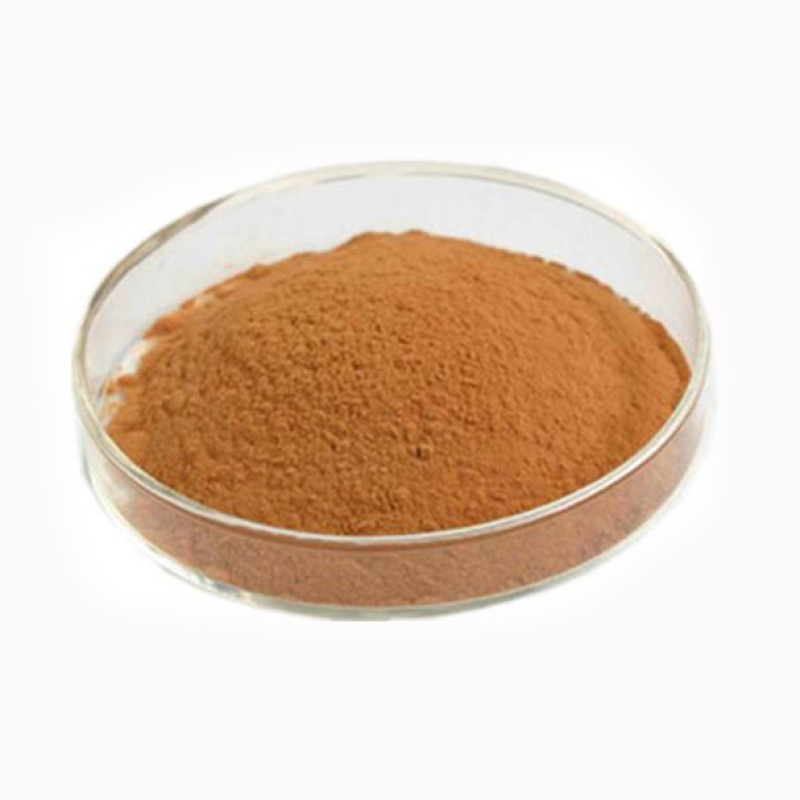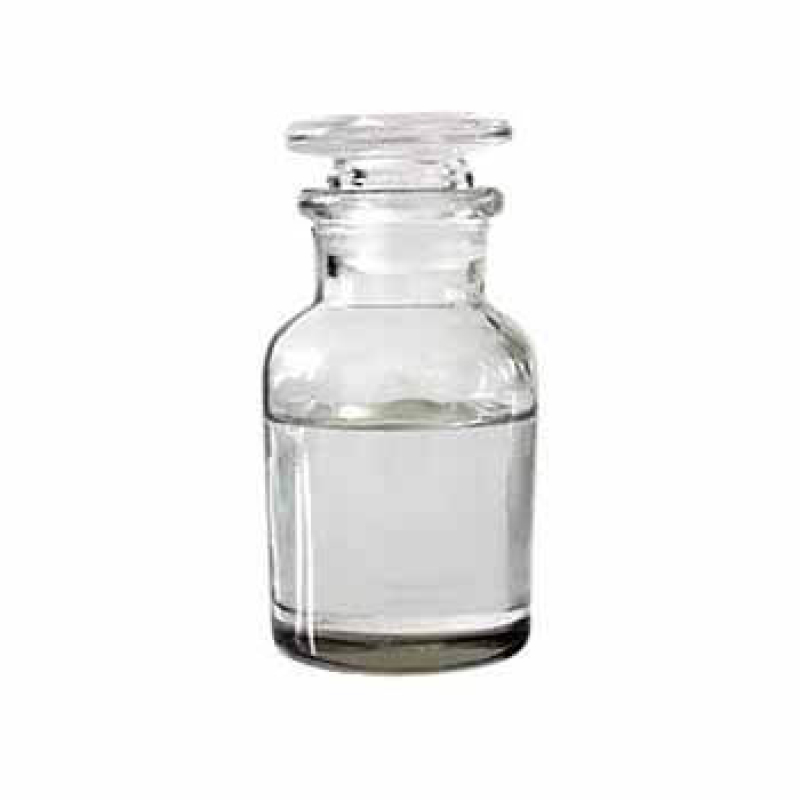Products Description of 3-Ethyl-3-oxetanemethanolCAS#3047-32-3Mainly used for UV polymerization, synthesis of coatings and resins.
Contact Now
Products Description of PAGOCLONE CAS#133737-32-3Pagolone is a specific GABA (Gamma-aminobutyric acid) receptor modulator that can reduce stuttering.
Contact Now
Products Description of 3-Methoxythiophene CAS#17573-92-13-Methoxythiophene is an important intermediate in organic synthesis.3-Methoxythiophene Chemical PropertiesMelting point 49-50 °C(Solv: ethyl ether (60-29-7); ligroine (8032-32-4))Boiling point 80-82 °C/65 mmHg (lit.)density 1.143 g/mL at 25 °C (lit.)refractive index n20/D 1.532(lit.)Fp 121 °Fstorage temp. Keep in dark place,Inert atmosphere,2-8°Cform Liquidcolor Clear light brownSensitive Air SensitiveBRN 106404LogP1.810 (est)CAS DataBase Reference17573-92-1(CAS DataB
Contact Now
2-[(4-Amino-3-methylphenyl)ethylamino]ethyl sulfate Chemical Propertiesdensity 1.5[at 20℃]vapor pressure 0.022Pa at 20℃storage temp. Keep in dark place,Sealed in dry,Room TemperatureWater Solubility 1000g/L at 20℃LogP-5.1 at 19.9℃CAS DataBase Reference25646-71-3(CAS DataBase Reference)EPA Substance Registry SystemN-[2-[(4-Amino-3-methylphenyl)ethylamino]methanesulfonamide sulfate (2:3) (25646-71-3)Safety InformationHazard Codes T,N,XnRisk Statements 25-36/37/38-43-50/53-22-34-23/24/25Safety Statements 26-36/37-45-61-60-37-24-36/37/39-27RIDADR UN 2811 6.1
Contact Now
4,4'-Methylenebis(N,N-diglycidylaniline) Chemical PropertiesBoiling point 619.3±35.0 °C(Predicted)density 1.15 g/mL at 25 °C(lit.)vapor pressure 0Pa at 24.85℃refractive index n20/D 1.601(lit.)Fp >230 °Fform clear liquidpka4.58±0.50(Predicted)color Light yellow to BrownWater Solubility 9.2mg/L at 20℃LogP2.12 at 22℃EPA Substance Registry SystemOxiranemethanamine, N,N'-(methylenedi-4,1-phenylene)bis[N-(oxiranylmethyl)- (28768-32-3)Safety InformationHazard Codes Xi,NRisk Statements 43-51/53Safety Statements
Contact Now
Products Description of 2-Amino-5-bromopyrazine CAS#59489-71-32-Amino-5-bromopyrazine is a compound that can be used in organic synthesis.2-Amino-5-bromopyrazine Chemical PropertiesMelting point 113-117 °C (lit.)Boiling point 274.2±35.0 °C(Predicted)density 1.844±0.06 g/cm3(Predicted)storage temp. Keep in dark place,Sealed in dry,Room Temperaturesolubility Ethanol, Ethyl Acetate, Methanolform Brown Needlespka1.66±0.10(Predicted)color Light yellow to BrownInChIKeyKRRTXVSBTPCDOS-UHFFFAOYSA-NCAS DataBase Reference59489-71-3(CAS DataBase Reference)Safety Inf
Contact Now
Products Description of 3-Hexylthiophene CAS#1693-86-33-Hexylthiophene is an important and commonly used electroactive compound.3-Hexylthiophene Chemical PropertiesMelting point -39.15°C (estimate)Boiling point 65 °C/0.45 mmHg (lit.)density 0.936 g/mL at 25 °C (lit.)refractive index n20/D 1.496(lit.)Fp 100 °Fstorage temp. Keep in dark place,Inert atmosphere,Room temperatureform Liquidcolor Clear colorless to slightly yellow or redWater Solubility Partly soluble in water.BRN 1617129CAS DataBase Reference1693-86-3(CAS DataBase Refe
Contact Now
Products Description of 1,2-Benzisothiazol-3(2H)-oneCAS#2634-33-51,2-Benzisothiazol-3-one (BIT for short) is a major industrial bactericidal, preservative and enzyme inhibitor. It has an outstanding inhibitory effect on the growth of mold, algae and other microorganisms in organic media. It can solve a series of problems such as mold, fermentation, deterioration, demulsification and odor of organic products caused by microbial growth.
Contact Now
Products Description of L-Arginine L-glutamate CAS#4320-30-3 White powder; Odorless or slightly odorous; with a special taste. Decomposes when heated to 193-194.6℃. 100ml. 25% aqueous solution contains 13.5g of arginine and 11.5g of glutamic acid.
Contact Now
Products Description of Spermine CAS#71-44-3 Spermine is a polyamine substance containing two amino groups and two imino groups. It is produced in the body by putrescine (butanediamine) and S-adenosylmethionine catalyzed by various enzymes. It and spermidine are both present in bacteria and most animal cells and are important substances that promote cell proliferation. Under acidic conditions, it exhibits the characteristics of polycationic polyamines and can bind to DNA in viruses and bacteria.
Contact Now
Products Description of Shellac CAS#9000-59-3 Shellac flakes, also known as shellac paint flakes or purple film flakes, are obtained by melting shellac raw glue or dissolving it with solvents to remove impurities. The color depth of the shellac paint flakes produced varies according to different requirements. Shellac paint flakes are a biological product used on furniture and home interior paint. They are free of pollutants, non-irritating odor, non-toxic, and non-allergic to the skin. They are a high-end paint.
Contact Now
Products Description of Phenibut CAS#1078-21-34-Amino-3-phenylbutyric acid hydrochloride is often used to prepare antidepressants.
Contact Now
Products Description of Direct Pigment Yellow 3 CAS#6486-23-3The pigment is a greenish light yellow powder with bright color. It can be dissolved in organic solvents such as ethanol and acetone when heated. It turns yellow when it meets concentrated sulfuric acid. The color remains unchanged in concentrated nitric acid, concentrated hydrochloric acid and dilute sodium hydroxide. It has good light resistance and heat resistance.
Contact Now
Products Description of DL-Limonene CAS#138-86-3Dipentene is a colorless, flammable liquid at room temperature with a pleasant lemon scent.
Contact Now
Products Description of N-[3-(Trimethoxysilyl)propyl]ethylenediamine CAS#1760-24-3N-(2-aminoethyl)-3-aminopropyltrimethoxysilane is a very representative silane coupling agent.
Contact Now
Products Description of Direct Red 23 CAS#3441-14-3 Purple-red powder. Moderately water-soluble, bright red when dissolved in water, its aqueous solution turns light blue when adding dilute sulfuric acid, produces wine-red precipitate when adding concentrated hydrochloric acid, and turns reddish orange-brown when adding concentrated alkali. Slightly soluble in ethanol and orange, insoluble in acetone.
Contact Now
Products Description of Lithium Aluminum Hydride CAS#16853-85-3Lithium aluminum hydride is a commonly used reducing agent in organic chemistry. It can reduce a variety of functional group compounds. It can also act on double-bond and triple-bond compounds to achieve hydroalumination. In addition, lithium aluminum hydride can also participate in the reaction as a base. For example, react LiAlH4 with 2 mol of ethanol to generate lithium diethoxyaluminum hydride [LiAlH2(OC2H5)2]; react with 3 mol of tert-butanol to generate lithium tri-tert-butoxyaluminum LiAlH[OC(CH3)3]3.
Contact Now
Products Description of Thiophene-3-ethanol CAS#13781-67-4Thiophene-3-ethanol can be used as a drug synthesis intermediate.Thiophene-3-ethanol Chemical PropertiesBoiling point 110-111 °C14 mm Hg(lit.)density 1.144 g/mL at 25 °C(lit.)refractive index n20/D 1.552(lit.)Fp 199 °Fstorage temp. Keep in dark place,Sealed in dry,Room Temperatureform Liquidpka14.92±0.10(Predicted)Specific Gravity1.144color Clear colorless to yellow-brownWater Solubility Sparingly soluble in water(0.059 g/L at 25°C).BRN 10708
Contact Now
Products Description of ISOQUINOLINE-3-CARBOXYLIC ACID CAS#203626-75-9 Isoquinoline-3-carboxylic acid, monohydrate is an organic compound.Isoquinoline-3-carboxylic acid Chemical PropertiesMelting point 166-168 °C(lit.)storage temp. 2-8°Cform powder to crystalcolor White to Light yellow to Light orangeSafety InformationHazard Codes XiRisk Statements 36/37/38Safety Statements 26-37/39WGK Germany 3Product Application of Isoquinoline-3-carboxylic acidIsoquinoline-3-carboxylic acid, monohydrate is often used as an intermediate.Factory
Contact Now
Products Description of 3,6-Dibromopyridazide CAS#17973-86-33,6-Dibromopyridazine is an important intermediate in organic synthesis.3,6-Dibromopyridazide CAS#17973-86-3 Chemical PropertiesMelting point 116 °CBoiling point 327.5±22.0 °C(Predicted)density 2?+-.0.06 g/cm3(Predicted)storage temp. Keep in dark place,Sealed in dry,Room Temperaturepka-1.18±0.10(Predicted)form Solidcolor White to pale yellowInChIInChI=1S/C4H2Br2N2/c5-3-1-2-4(6)8-7-3/h1-2HInChIKeyVQAFMTSSCUETHA-UHFFFAOYSA-NSMILESC1(Br)=NN=C(Br)C=C1Safety InformationHazard Codes XnRisk Statements&
Contact Now
Products Description of ISOQUINOLIN-3-AMINE CAS#25475-67-6ISOQUINOLIN-3-AMINE is a yellow-green powder solid.CAS No.
Contact Now
Products Description of 3-Pyridazinecarboxylic Acid CAS#2164-61-63-Carboxypyridazine is a heterocyclic derivative that can be used as a pharmaceutical intermediate in pharmaceutical experimental research and pharmaceutical synthesis.3-Pyridazinecarboxylic Acid CAS#2164-61-6 Chemical PropertiesMelting point 200-209 °CBoiling point 404.2±18.0 °C(Predicted)density 1.403±0.06 g/cm3(Predicted)storage temp. Keep in dark place,Sealed in dry,Room Temperatureform solidpka3.65±0.10(Predicted)Safety InformationHazard Codes XiRisk Statements 36/37/38Safet
Contact Now
Products Description of cocoyl glutamic acid CAS#210357-12-3Colorless transparent liquidFactory and Equipment ShowFast delivery timeInventory 2-3 working days New production 7-10 working days
Contact Now
Products Description of 3-DIMETHYLAMINO PROPYLAMINE #CAS:113-59-73-Dimethylaminopropylamine (DMAPA), known for its chemical formula C5H16N2, is an essential intermediate in organic synthesis with a wide range of applications, particularly in the production of dyes, ion-exchange resins, epoxy curing agents, and as an additive in oil and cyanide-free electroplating processes. It also serves as a fiber and leather treatment agent and a bactericide.
Contact Now





![2-[(4-Amino-3-methylphenyl)ethylamino]ethyl sulfate CAS#25646-71-3](https://d3rnfhc14zcmdf.cloudfront.net/cdn/ff/ajFsuj6mTmmz3hDz6CaNhAHQxNdzab-pzXtI1_I221c/1716845048/public/styles/chanpinzhutu/public/2024-05/%E7%99%BD%E8%89%B2%E7%B2%89%E6%9C%AB%20%282%29_1.jpg?itok=NPtfJC7-)










![N-[3-(Trimethoxysilyl)propyl]ethylenediamine CAS#1760-24-3](https://d3rnfhc14zcmdf.cloudfront.net/cdn/ff/1XTKAt_OOYi_hESPlOywnxqqrhOwjixyrJ7jbKv7qRw/1716845046/public/styles/chanpinzhutu/public/2024-05/%E6%97%A0%E8%89%B2%E6%B6%B2%E4%BD%93%20%282%29_20.jpg?itok=GEQYDPar)
















